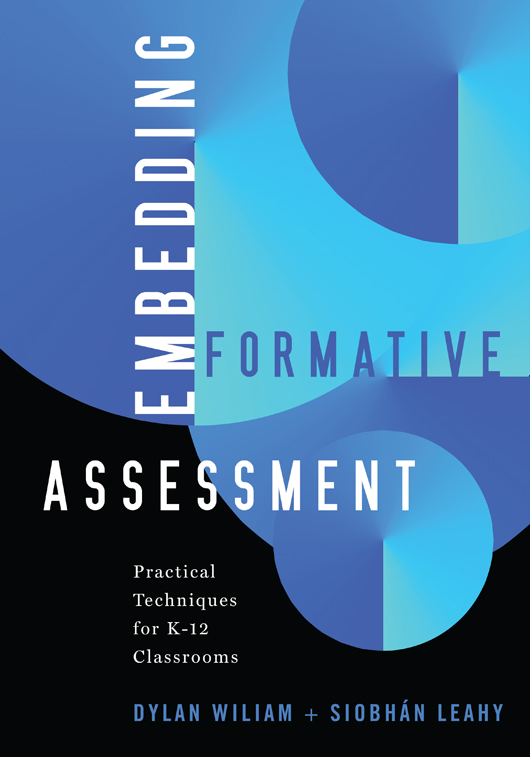Free Reproducibles
Embedding Formative Assessment
Practical Techniques for K–12 Classrooms
This book is designed to focus on implementing, sustaining, and developing effective formative assessment techniques in K–12 classrooms. Teachers and leaders can gain five key strategies to ensure instructional decisions are made so that all students learn at high levels.
Benefits
- Clarify, share, and understand learning intentions and success criteria.
- Engineer productive discussions and activities that elicit evidence of learning.
- Provide feedback that moves learners forward.
- Activate students as learning resources for each other.
- Activate students as owners of their own learning.
TABLE OF CONTENTS
Introduction
Chapter 1: Why Formative Assessment Should Be a Priority for Every Teacher
Chapter 2: Your Professional Learning
Chapter 3: Strategy 1: Clarifying, Sharing, and Understanding Learning Intentions and Success Criteria
Chapter 4: Strategy 2: Engineering Effective Discussion, Tasks, and Activities That Elicit Evidence of Learning
Chapter 5: Strategy 3: Providing Feedback That Moves Learning Forward
Chapter 6: Strategy 4: Activating Students as Learning Resources for One Another
Chapter 7: Strategy 5: Activating Students as Owners of Their Own Learning
Conclusion
Resources
Appendix: A Brief Guide to Effect Sizes
PRINTABLE REPRODUCIBLES
Introduction
Chapter 3
- Reflection Checklist for Strategy 1: Clarifying, Sharing, and Understanding Learning Intentions and Success Criteria
- Lesson Planning Sheet
- Peer Observation Sheet
Chapter 4
- Reflection Checklist for Strategy 2: Engineering Effective Discussion, Tasks, and Activities That Elicit Evidence of Learning
- Lesson Planning Sheet
- Peer Observation Sheet
- My Learning Log
Chapter 5
- Reflection Checklist for Strategy 3: Providing Feedback That Moves Learning Forward
- Lesson Planning Sheet
- Peer Observation Sheet
Chapter 6
- Reflection Checklist for Strategy 4: Activating Students as Learning Resources for One Another
- Lesson Planning Sheet
- Peer Observation Sheet
Chapter 7
- Reflection Checklist for Strategy 5: Activating Students as Owners of Their Own Learning
- Lesson Planning Sheet
- Peer Observation Sheet
Conclusion
Resources
- Reflection Checklist for Strategy 1: Clarifying, Sharing, and Understanding Learning Intentions and Success Criteria
- Reflection Checklist for Strategy 2: Engineering Effective Discussion, Tasks, and Activities That Elicit Evidence of Learning
- Reflection Checklist for Strategy 3: Providing Feedback That Moves Learning Forward
- Reflection Checklist for Strategy 4: Activating Students as Learning Resources for One Another
- Reflection Checklist for Strategy 5: Activating Students as Owners of Their Own Learning
- Lesson Planning Sheet
- Peer Observation Sheet
- Student Survey
- Student Feedback to Teacher
- My Learning Log
- Student Reflections on Learning
- Example Letter From Class Teacher to Parents
- Self-Assessment Prompts That Address Your Feelings About the Work
- Self-Assessment Prompts That Address Your Thoughts About the Work
- Self-Assessment Prompts That Address Your Actions in the Work
- Quick Reference Guide
SUGGESTED RESOURCES
BOOKS
- Wiliam, D. (2007a). Content then process: Teacher learning communities in the service of formative assessment. In D. B. Reeves (Ed.), Ahead of the curve: The power of assessment to transform teaching and learning (pp. 183–204). Bloomington, IN: Solution Tree Press.
- Wiliam, D. (2011a). Embedded formative assessment. Bloomington, IN: Solution Tree Press.
WEBSITES

